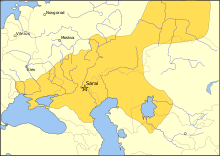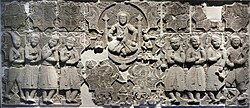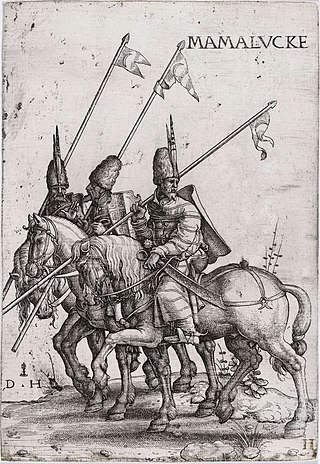
Mamluk or Mamaluk were non-Arab, ethnically diverse enslaved mercenaries, slave-soldiers, and freed slaves who were assigned high-ranking military and administrative duties, serving the ruling Arab and Ottoman dynasties in the Muslim world.
Baybars al-Jashankir or Baybars II, royal name al-Malik al-Muzaffar Rukn ad-Din Baybars aj-Jashankir al-Mansuri, also known as Abu al-Fath (أبوالفتح), was the 12th Mamluk sultan of Egypt in 1309–1310.

Qalāwūn aṣ-Ṣāliḥī was the seventh Turkic Bahri Mamluk sultan of Egypt; he ruled from 1279 to 1290. He was called al-Manṣūr Qalāwūn. After having risen in power in the Mamluk court and elite circles, Qalawun eventually held the title of "the victorious king" and gained de facto authority over the sultanate. He is the founder of the Qalawunid dynasty that ruled Egypt for over a century.

Abu Ahmad Abdallah ibn al-Mustansir bi'llah, better known by his regnal title Al-Mustaʿṣim bi-llāh, was the 37th and last caliph from the Abbasid dynasty ruling from Baghdad. He held the title from 1242 until his death in 1258.
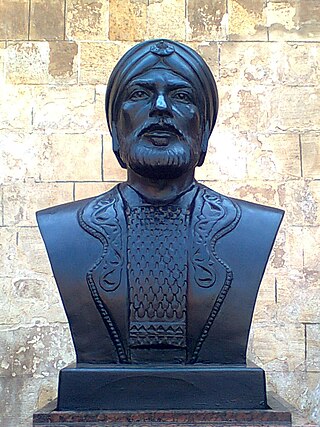
Sayf al-Din Qutuz, also romanized as Kutuz or Kotuz and fully al-Malik al-Muẓaffar Sayf ad-Dīn Quṭuz, was the Mamluk Sultan of Egypt. He reigned as Sultan for less than a year, from 1259 until his assassination in 1260, but served as the de facto ruler for two decades.

Al-Malik Al-Ashraf Salāh ad-Dīn Khalil ibn Qalawūn was the eighth Turkic Bahri Mamluk sultan, succeeding his father Qalawun. He served from 12 November 1290 until his assassination in December 1293. He was well known for conquering the last of the Crusader states in Palestine after the siege of Acre in 1291. While walking with a friend, Khalil was attacked and assassinated by Baydara and his followers, who was then killed under the orders of Kitbugha.

Al-Malik an-Nasir Nasir ad-Din Muhammad ibn Qalawun, commonly known as an-Nasir Muhammad, or by his kunya: Abu al-Ma'ali or as Ibn Qalawun (1285–1341) was the ninth Mamluk sultan of the Bahri dynasty who ruled Egypt between 1293–1294, 1299–1309, and 1310 until his death in 1341. During his first reign he was dominated by Kitbugha and al-Shuja‘i, while during his second reign he was dominated by Baibars and Salar. Not wanting to be dominated or deprived of his full rights as a sultan by his third reign, an-Nasir executed Baibars and accepted the resignation of Salar as vice Sultan.

Izz al-Din Aybak was the first of the Mamluk sultans of Egypt in the Turkic Bahri line. He ruled from 1250 until his death in 1257.

Shajar al-Durr, also Shajarat al-Durr, whose royal name was al-Malika ʿAṣmat ad-Dīn ʾUmm-Khalīl Shajar ad-Durr, was a ruler of Egypt. She was the wife of As-Salih Ayyub, and later of Izz al-Din Aybak, the first sultan of the Mamluk Bahri dynasty. Prior to becoming Ayyub's wife, she was a child slave and Ayyub's concubine.

The Battle of Fariskur was the last major battle of the Seventh Crusade. The battle was fought on 6 April 1250, between the Crusaders led by King Louis IX of France and Egyptian forces led by Turanshah of the Ayyubid dynasty.
Pope Athanasius III of Alexandria, 76th Pope of Alexandria and Patriarch of the See of St. Mark.

The Battle of Mansurah was fought from 8 to 11 February 1250, between Crusaders led by Louis IX, King of France, and Ayyubid forces led by Sultana Shajar al-Durr, vizier Fakhr ad-Din ibn as-Shaikh, Faris ad-Din Aktai, Baibars al-Bunduqdari and Qutuz. It was fought in present-day Mansoura, Egypt. The Crusader force was enticed into entering the town where it was set upon by the Muslim force. The Crusaders withdrew in disorder to their encampment where they were besieged by the Muslims. The Crusaders broke-out and withdrew to Damietta in early April.

Al-Malik al-Zahir Rukn al-Din Baybars al-Bunduqdari, commonly known as Baibars or Baybars and nicknamed Abu al-Futuh, was the fourth Mamluk sultan of Egypt and Syria, of Turkic Kipchak origin, in the Bahri dynasty, succeeding Qutuz. He was one of the commanders of the Egyptian forces that inflicted a defeat on the Seventh Crusade of King Louis IX of France. He also led the vanguard of the Egyptian army at the Battle of Ain Jalut in 1260, which marked the first substantial defeat of the Mongol army and is considered a turning point in history.
An-Nasir Yusuf, fully al-Malik al-Nasir Salah al-Din Yusuf ibn al-Aziz ibn al-Zahir ibn Salah al-Din Yusuf ibn Ayyub ibn Shazy, was the Ayyubid Kurdish Emir of Syria from his seat in Aleppo (1236–1260), and the Sultan of the Ayyubid Empire from 1250 until the sack of Aleppo by the Mongols in 1260.

Kitbugha, royal name: al-Malik al-Adil Zayn-ad-Din Kitbugha Ben Abd-Allah al-Mansuri al-Turki al-Mughli; Arabic: الملك العادل زين الدين كتبغا بن عبد الله المنصورى التركى المغلى) was the 10th Mamluk sultan of Egypt from December 1294 to November 1296.

The Mamluk Sultanate, also known as MamlukEgypt or the Mamluk Empire, was a state that ruled Egypt, the Levant and the Hejaz from the mid-13th to early 16th centuries. It was ruled by a military caste of mamluks headed by a sultan. The sultanate was established with the overthrow of the Ayyubid dynasty in Egypt in 1250 and was conquered by the Ottoman Empire in 1517. Mamluk history is generally divided into the Turkic or Bahri period (1250–1382) and the Circassian or Burji period (1382–1517), called after the predominant ethnicity or corps of the ruling Mamluks during these respective eras.
Kafartab was a town and fortress in northwestern Syria that existed during the medieval period between the fortress cities of Maarat al-Numan in the north and Shaizar to the south. It was situated along the southeastern slopes of Jabal al-Zawiya. According to French geographer Robert Boulanger, writing in the early 1940s, Kafartab was "an abandoned ancient site" located 2.5 mi (4.0 km) northwest of Khan Shaykhun.
Sharaf ad-Din Isa ibn Muhanna at-Ta'i, better known as Isa ibn Muhanna, was an Arab emir (commander/prince) of the Al Fadl, a Bedouin dynasty that dominated the Syrian Desert and steppe during the 13th–15th centuries. He was appointed amir al-ʿarab by the Mamluks after their conquest of Syria in 1260. Isa's father served the same post under the Ayyubids. His assignment gave him command over the nomadic Arab tribes of Syria and obliged him to provide auxiliary troops in times of war and guard the desert frontier from the Mongol Ilkhanate in Iraq. As part of his emirate, he was granted Salamiyah and Sarmin. He participated in numerous campaigns against the Mongol Ilkhanate on behalf of the Mamluks during Sultan Baybars' reign (1260–1277).
Shams al-Din Sunqur al-Ashqar al-Salihi was the Mamluk viceroy of Damascus in 1279–1280, who attempted to rule Syria independently, in a rebellion against the Egypt-based sultan Qalawun. While the rebellion in Damascus was quashed in 1280, Sunqur ensconced himself in the Sahyun Castle in the coastal mountains of northern Syria. He joined Qalawun in the successful defense of Syria against the Ilkhanid Mongols at the Battle of Homs in 1281. He remained in a state of peaceful relations with the sultan, despite ruling his coastal principality independently.
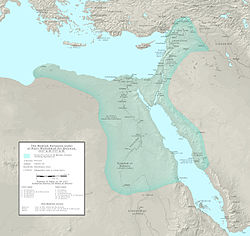



![Enthroned Prince. Probably Egypt 1334. Maqamat of al-Hariri. "In the paintings the facial cast of these [ruling] Turks is obviously reflected, and so are the special fashions and accoutrements they favored". Maqamat of al-Hariri. Enthroned Prince. Probably Egypt 1334.jpg](http://upload.wikimedia.org/wikipedia/commons/thumb/1/12/Maqamat_of_al-Hariri._Enthroned_Prince._Probably_Egypt_1334.jpg/220px-Maqamat_of_al-Hariri._Enthroned_Prince._Probably_Egypt_1334.jpg)
